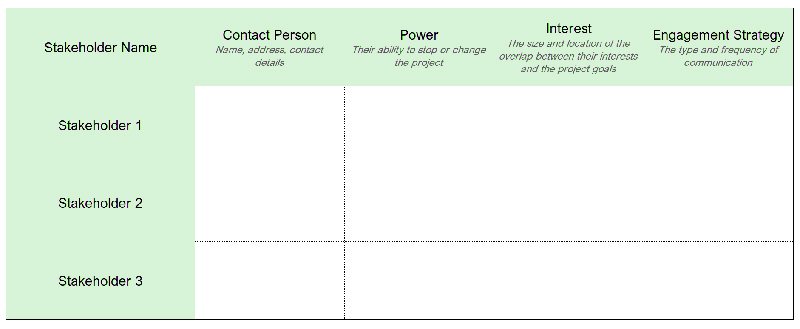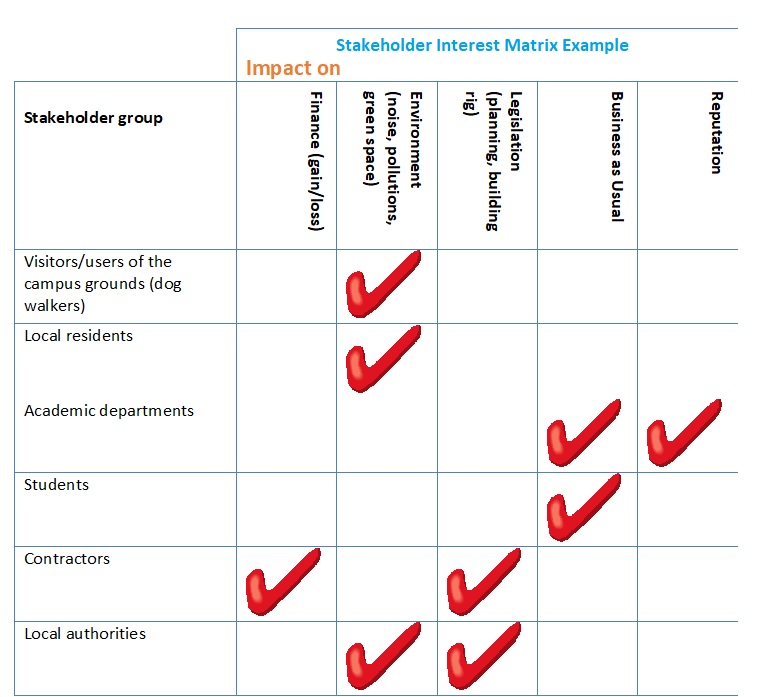Stakeholder analysis is a technique vital to winning people and is crucial for the planning and execution of a project. Stakeholders are important in business and mega projects. This stakeholder analysis template lets you decide the real stakeholders, their impact, and their role in working.
Thank you for reading this post, don't forget to subscribe!Stakeholder Analysis
The benefit of stakeholder analysis to any organization includes gathering opinions at the initial stage of the project which is vital to develop a communication plan. The stakeholder’s main goal is to build a strong and cooperative relationship between stakeholders and the project manager to complete the project successfully.
Stakeholder analysis (stakeholder mapping) is an important step to start a new project. It impacts individuals, community leaders, groups, and other organizations. Stakeholders can be external as well as internal.
Stakeholder analysis templates are helpful to identify the stakeholders for your project, on the basis of their influence level. While creating a stakeholder analysis template for reliable results, insert this useful and productive information in your template.
Stakeholder Analysis Template Features

- First, identify and write down all the stakeholders. Minor and major stakeholders should be mentioned here. A stakeholder can be any group or individual.
- List down the key member if the stakeholder is a team or group and find their influence and shares in the project in percentage (%).
- Check whether you can fulfill their needs or not.
- If your project includes customers then mention them as stakeholders.
- After listing down all stakeholders, define their types whether they are reviewers, providers or output deliverers, etc.
- By completing these steps, you can prioritize your stakeholders.
It is not important to have a long list of individual stakeholders. All stakeholders cannot be in your favor because some of them can have different opinions.
Some may be interested in your work while others are not interested, some have powers to block you or make you grow. So, use stakeholder analysis templates to contact your key personnel. The stakeholder analysis document helps you in controlling any sort of database on its utility and implied functions of Excel.
Why You Must Use Stakeholder Analysis Excel Templates
Making a business decision is not an easy task but having experts can handle these problems. The stakeholder analysis templates are important and specially designed to help you to contact a vital person.
All of these templates include defined headers, sections, and areas that can help you to find out the most experienced and professional stakeholders so they can ensure the smooth working of the current business or project.
You can download and customize a stakeholder analysis template to create a balance between a stakeholder and the project manager. You can also edit and replace the headers and sections according to your preferences to ensure that your project runs successfully.
By specifying the purpose of use you can find hundreds of free designs of stakeholder templates for Excel, and you can customize them for your personalized use.
Steps To Conduct Stakeholder Analysis
There are 3 steps that we follow to complete this analysis;
- Identification of Stakeholders
- Setting Priorities among Stakeholders
- Understanding with Stakeholders
Identification of Stakeholder
As we know, an individual or a company that can affect our project or business is called a stakeholder. In this step, we identify those people or organizations that have the power or other resources to affect our project.
Setting Priorities
Now the most important step is to set priority among the stakeholders. We can set this priority by evaluating which stakeholder is most important for our project or investing more capital than others. In some cases, we can set our priority level according to our project requirements.
Understanding with Stakeholders
This step also has core value for any project, so we should make professional understanding with our stakeholders that are investing in our project in the form of time, services, capital investment, etc. We can a strong bond of professional relationship with our stakeholders through proper planning, meetings, discussion of their interests, etc.
However, we need to make a trust bridge between stakeholders too that will boost our project progress. We can do this task by asking the following question;
- Who are the stakeholders?
- What is their profile?
- What are the interests at stake?
- What are the relationships between each stakeholder?
- Who is ready
- Opposed to change?
Stakeholder Management With Other Templates
In stakeholder management plan, their analysis plays a core role in this process because it helps us to set priorities among them. However, here are some project management documents that are recommended to conduct this analysis.
RACI Matrix Template
After conducting an analysis of stakeholders, it’s time to set up RACI (roles and responsibilities). As we know that RACI stands for responsible, accountable, consulted, and informed, so, we set them among all stakeholders according to their interest in the project.
Communication Plan Template
In project planning, a communication plan is also included in core planning, because it defines communication hierarchy within the organization and provides a proper channel to communicate with outside the organization. Basically, CPT provides you with directions to follow for the purpose of communication.
Project Status Report Template
To share the latest development on a project or any updates you can use the PSR template that will assist you to show progress. You can say, it’s a project progress dashboard that you can easily use in your meeting briefing and presentations.
Stakeholder Analysis Matrix Types
However, there are three types of analysis that you can conduct to analyze your stakeholders;
- Power Interest matrix
- Stakeholder analysis matrix
- Stakeholder Engagement Assessment matrix
Power & Interest Matrix
Stakeholder analysis has another system to conduct this analysis on the basis of stakeholder Power & Interest.
Power: If a stakeholder wants to change a project or stop it at any stage of the project life cycle, it’s called power. For example, Govt, the top management, and big investors have these kinds of power.
Interest: The similarity between project goals/objectives and stakeholders is called interest.
Now when we draw a graph then these two factors will be plotted on this. The power factor lies on y-axis, and the interest factor lies on the x-axis. This chart helps us to identify stakeholders according to their objectives.

This Power & Interest analysis matrix provides unique analytical data that helps us to manage stakeholders. Below there is a detail of this chart matrix;
Stakeholders with less power and low interest are characterized in the list of normal management because they are not able to change/terminate the project and also have very low interest.
- Stakeholders with low interest and high power are characterized by a well-managed list and keep them fully satisfied because they have high power to modify or stop the project.
- However, stakeholders with low power but high interest are characterized in the list that you have to provide authentic information about the project that keeps them intact with you on the project.
- Moreover, stakeholders that have high power and high interest must be managed carefully, because they are core stakeholders with the highest power and interest in the project.
Stakeholders Interest Matrix Example
Below there is clarification about the interest Matrix:

Stakeholder Analysis Matrix
As we know that the core of to analysis a stakeholder is Power & interest. From these factors, you can produce good manageable data on which you can manage your stakeholders.
Now, in this analysis matrix we characterized stakeholders on some other factors that are:
- Financial interests: Means profitability ratio and project growth rate
- Moral and ethical values: This stands for stakeholder social behavior, their morals, and work-related ethics.
- Religious beliefs: Has a deep impact on their perceiving ability.
- Political opinions These factors are characterized as a governing core and their response towards the project.
- Business interests: explain their vision, goals, and future plans.
- Demographics: This drives preferences in their lives and achievements.
- Environment Friendly: This factor explains their views and ambition toward the world environment.
- Ownership: this is associated with resources and properties.
- Communication: this factor is important because it explains communication preferences.
Stakeholder Engagement Assessment Matrix
This engagement assessment matrix is important because it not only helps you in stakeholders management, also provides you assist how you can keep engaging stakeholders through their activities during the different project lifecycle.

Below there are five factors that provide a better assessment of your stakeholders based on their interest:
Unawareness: In this category, those stakeholders fall that has a lack of awareness about the project and its profitability.
Resistant: this category helps you to understand those stakeholders that have awareness of the project but they are not actively involved in the project.
Neutral: These are those stakeholders that are aware of the project and project scope but they are not supporting the project.
Supportive: These are those stakeholders that are working on the project.
Leading: This category of stakeholders is actively involved in the project and its support.




